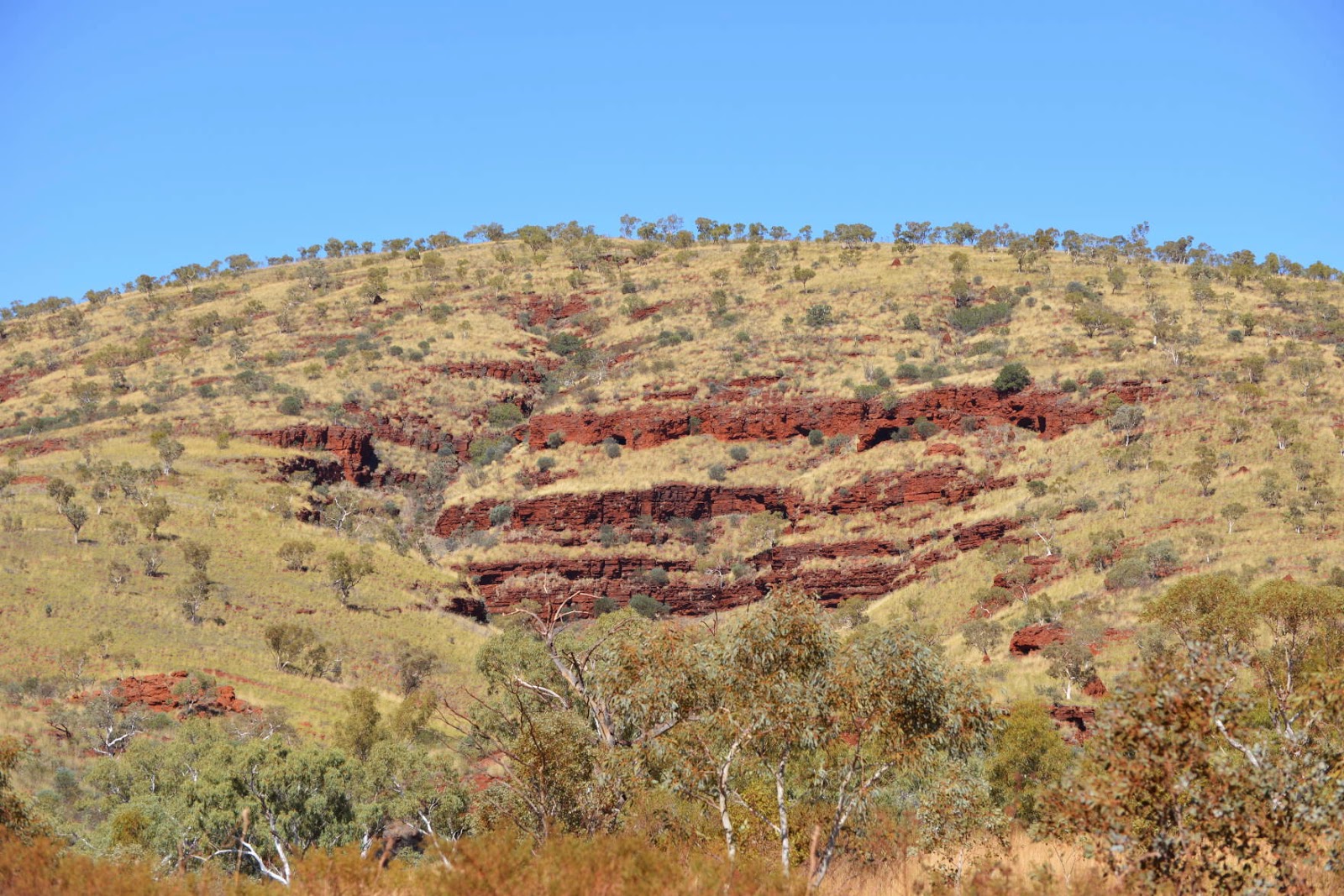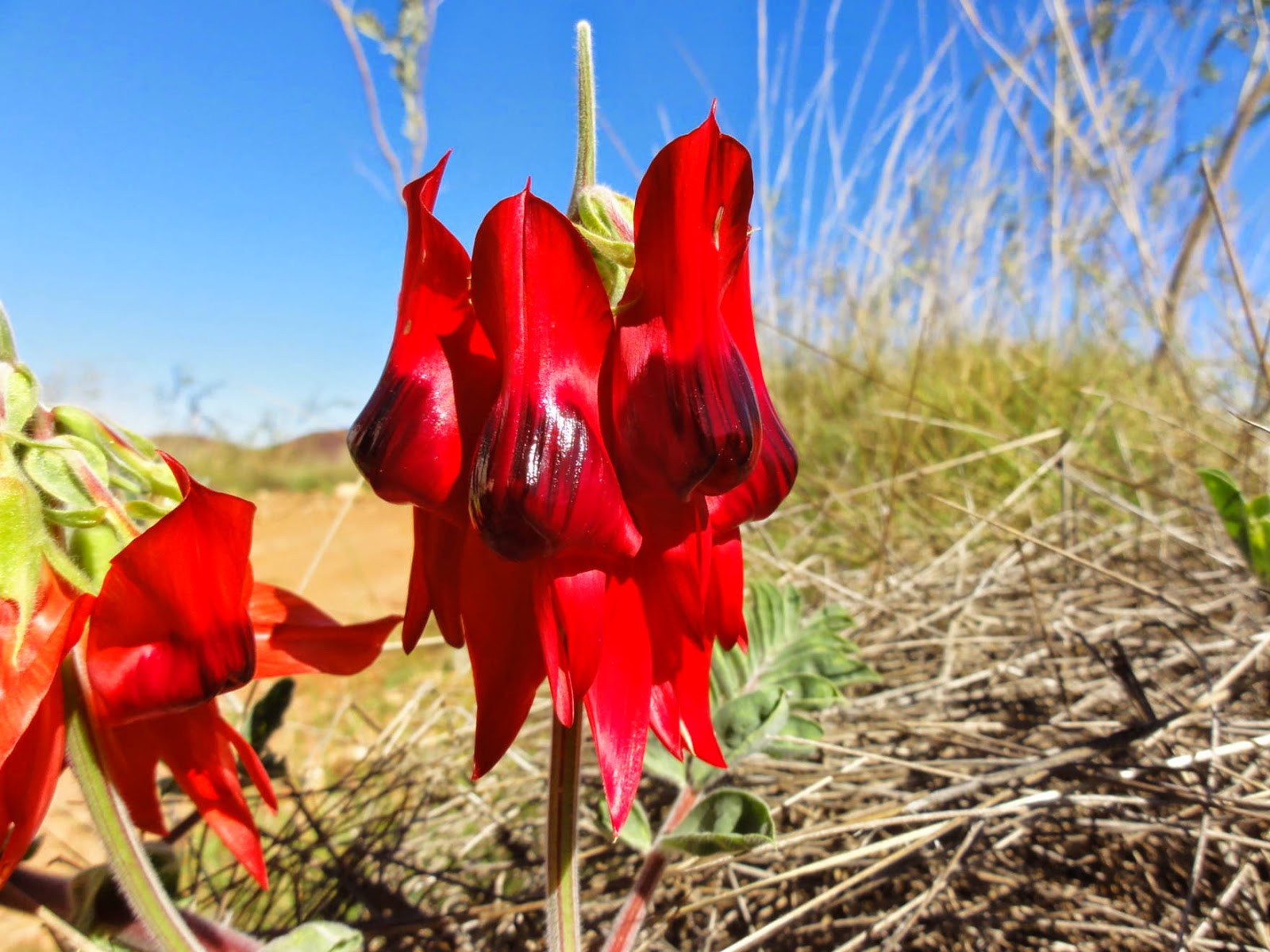The Pilbara is an amazing contrast between beautiful landscapes and the massive resources industry. The scenery is dominated by bright red cliffs, white-barked gums and yellow spinifex. Just stunning!
The botanical name for one of the spinifex species is "Triodia irritans" - a very appropriate name. If you walk through it, the tips dig into your skin, break off and irritate you for days! Even the early explorers complained about them.
Tom Price is under the control of mining giant Rio Tinto. The hotel has only single rooms! Below is a section of the mining operations. There is no big pit in the ground, they take away whole mountains! I guess rehabilitation will be easy - just let the spinifex grow back.
Rio Tinto's operations in the Pilbara comprise 15 mines, 4 ports and the largest privately-owned heavy freight railway in Australia. In 2013 Rio Tinto shipped a staggering 191 million tonnes of dry bulk cargo overseas (mostly to China)! And then there is BHP and many others. We went through an induction and got a permit to drive on the private road along the railway. This train comprised 4 locomotives and 234 cars!
The permanent freshwater pools in Millstream-Chichester National Park are fed by springs that draw water from the underground aquifer within porous dolomite rock. It has been an oasis for indigenous people and early settlers and is now the water source for Karratha and Port Hedland.
Karratha has an annual festival called FeNaClNG Festival, which stands for Fe (Iron), NaCl (Salt) and NG (Natural Gas). Needless to say, it's all about resources, industry and shipping and we didn't linger. The North West Shelf Project LNG plant below.
Our first Sturt's Desert Pea (Swainsona formosa) of the trip! In nature....
.... and in the Port Hedland Hotel.
Port Hedland has a natural deep harbour and is one of the main export ports for iron ore - this time dominated by BHP. Note the large tidal range (up to 7m in spring tides) on the pylons.



















No comments:
Post a Comment